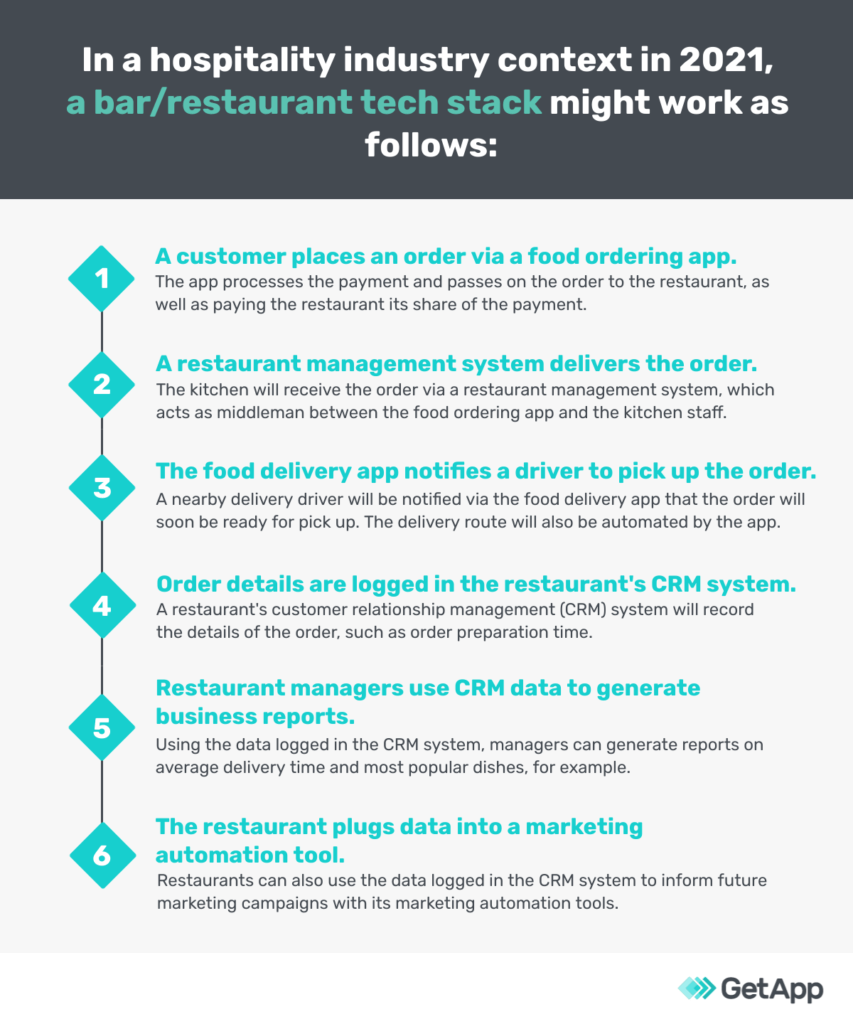Top Tech Trends : Redefining Operations in Canadian Restaurants and Bars
The essence of Canadian cities has long been in the life, vibrancy, and diversity of their restaurants and bars. Regrettably, “We are closed” signs have increased since the outbreak of COVID-19. A drastic decline in both foot traffic and dine-in bookings has been witnessed across the Canadian service industry, particularly in Quebec. Lockdowns have also led to an increase in social anxiety and safety-consciousness. According to The Conversation, 10% of independent restaurants in Canada have permanently shut down in light of pandemic-related hardships, and another 40% are not expected to survive the year.
To recoup from business losses and industry changes, bars and restaurants are turning to technology solutions, particularly tech stack models, which combine integrated tools and functions. Operators use digital technologies to monitor different business processes from health and safety measures to the processing of online orders.

With the implementation of tech stacks, bars and restaurants can automate most of their business processes and streamline data flows. Here are the top three technology trends that are transforming the dining experience:
- Software Solutions
Due to the stringent lockdowns introduced in 2020, people in Canada turned to delivery services. Today, restaurants and bars rely on food delivery applications so customers can enjoy restaurant meals in the comfort of their homes. As the threat of COVID-19 is likely to persist, this trend will continue in the long-term. This means operators need to ramp up their delivery workflows and services. To meet the emerging demand, bars and restaurants are adopting tech solutions, such as:
- Inventory management software: Restaurants and bars need to be able to adjust the ever-changing capacity limits. Inventory management helps users to monitor inventory levels in various locations in real time and track reorder limits.
- Employee scheduling software: Businesses often need to make quick adjustments to staff rosters with limited notice. Employee scheduling tools enable businesses to view employees’ scheduled hours, deliver communications, and schedule or switch shifts.
- Business performance management software: This software helps in retrieving data from the entire tech stack of an establishment and represent it in an easy-to-digest format using charts and graphs.
- Safely socially distanced
With restrictions still in place, Canadian citizens are exploring safe options for casual dining. Bars and restaurants are quickly identifying new trends and adopting technologies to increase visits, while ensuring social distancing and customer safety. Most restaurants are implementing air purification technology, plexiglass barriers, table dividers, and al fresco dining options. However, in terms of physical safety measures, businesses should also be thinking about how tech solutions can aid with social distancing:
- Kiosks: Many restaurants and bars are now replacing concierge services with kiosks, unified portals that provides interactive terminals so customers can access information, place and track orders, or make bookings all while keeping socially distanced.
- Reservations: The implementation of reservation software enables customers to book a table for a particular time slot without adding to in-person contacts.
- Chatbots: Chatbots enable restaurants to offer a simple, virtual assistant, which answers many customers queries and provides services throughout the day.
- Social media landscape
During lockdowns, Canadians turn to browsing social media for entertainment. Foodservice brands and operators are capitalizing on this trend and looking to increase their presence on social media platforms. In order to magnetize potential customers and increase brand awareness, restaurants and bars are investing in several technology solutions:
- Websites: Today’s businesses require websites, which should contain information such as opening hours, location, and menus, as well as more personalized messages, vig floating posts, brand stories, and customer reviews. Sites should also allow users to order online or make table reservations.
- Social media: Social media is an integral part of marketing. Social media marketing software allows users to run targeted campaigns, schedule posts, and build brand awareness across platforms such as Facebook, Instagram, TikTok, and more.
- CRM software: Customer relationship management (CRM) tools enable businesses to automate sales processes and manage pipelines. It further allows them to design and create customized marketing emails, as well as instantly measure their engagement.

Life tends to throw curve balls but humans quickly adapt to the new normal and find solutions. While lockdowns have paralyzed the industry, Canadian bars and restaurants are turning to tech solutions to provide customers with memorable — and more importantly, safe — dining experiences whether off-premises or in-house.










I love you humanity